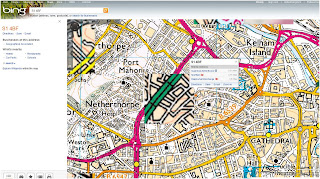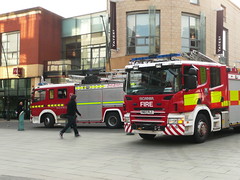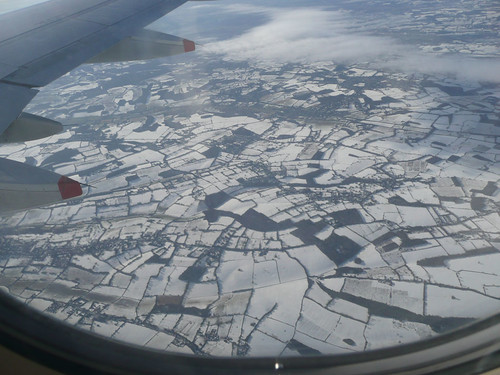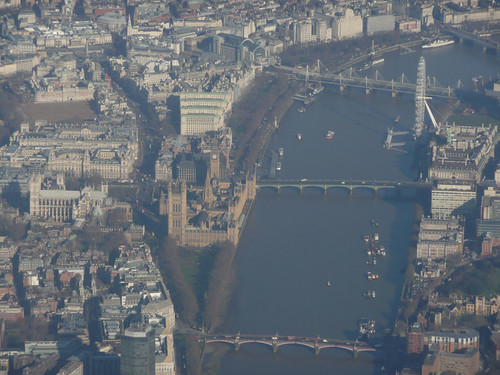Thursday, 21 October 2010
Blipfoto: reading and creating photo journals
I realise that I've been rather negligent of this blog since June and I'd just like to say that it's not all down to my new obsession with `Blipfoto'. I really have been very busy and when I get a few more minutes I'll share some of the ideas linked to my new project: Geography and the Global Dimension.
However - I have become a little obsessed with this photo-blogging or photo-journaling website since a friend told me about it. There are several things that appeal to me about the website: first it keeps me in touch with a friend who now lives in Spain and we can share some of the things that interest us (I know many people use Facebook to do this but I quite like the different `tone' of Blipfoto), second I can keep my own journal which I hope to be able to look back to in future years and third MOST IMPORTANT from my point of view is that I can read the journals and look at the images of people who live in and beyond the UK. Doreen Massey (OU Emeritus Professor of Geography) said something like `Space' is the meeting point of a thousand stories and Blipfoto certainly is that. One of my favourite journals is written by HPX who lives in New Zealand. It has felt quite a privilege to read her journal entries about the latest New Zealand earthquake and to gain a sense of how the earthquake has affected her and the people of Christchurch and district. I hadn't realised how long and how frequent the aftershocks of an earthquake can be. It has been a real eye-opener for me to read her entries and see the way she weaves in the normality of everyday life with the constant terrifying threat of what the next `rattler' might bring.
I also love the story of `Brian the Snail' - why not follow his adventures for the rest of the week. I think this very simple tellingof a photo-story is something that we could use with children.
Where's the path
Many thanks to teacher advisers in Stockport for showing me this website. This is a fantastic site if you want to compare a map and aerial view. View `Where's the path' >>>
Friday, 25 June 2010
Mountain views taken in Banff - Using Microsoft Photosynth
You can find out more about how to do this on his blog: http://mikemcsharry.com/2009/11/12/leicestershire-photosynths/
Wednesday, 16 June 2010
Primary History & Geography National Conference in Manchester - 15th June 2010
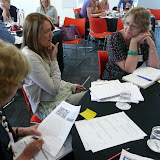
The GA (Geographical Association) and HA (Historical Association) ran a very successful primary conference in Manchester yesterday. Photographs from two of the geography sessions (which was held at The Hive in Lever Street) can be accessed by clicking on the photograph. You are welcome to download photographs from my Picasa page (I know some people in the afternoon event were interested in obtaining photographs of the mapping activity to use with their students). I will be updating my PowerPoint presentation and making this available shortly.
Tuesday, 1 June 2010
In the footsteps of Katie Morag
I'm just back from a week away on the remote Scottish Island of Coll, the inspiration for the setting of the Katie Morag stories, written and illustrated by Mairi Hedderwick. I've always had a soft spot for the Katie Morag books and also for the artwork of Mairi Hedderwick which can also be found in her books for adults. I particularly enjoyed `An eye on the Hebrides' . If Katie Morag is new to you - try the Random House - Katie Morag website.
`Katie Morag and the Two Grandmothers' was used as the basis for a KS1 scheme of work for Year 2 children called `An island home' (though looking at it now I can see that it is both dated and rather uninspiring). I always did think that `Katie Morag delivers the mail' and `Katie Morag and the new pier' provide a much better geographical insight of her island.
Visiting Coll has brought home to me the historical setting of these books and how much the island has changed since `Katie Morag's' time. It's also made me think about how important it is to remember that Struay, the fictional island that Katie lives on is not Coll, though Mairi Hedderwick cleverly incorporates many of the features of Coll into her map of Struay. Why not download the map from the Random House website and have a look.
I've begun to add some of my own images of Coll onto my Flickr website and also to have a look at other websites that feature the island.
Created with Admarket's flickrSLiDR.
Any study of geeography is best enhanced by asking geographical questions. Why not use the websites below to help you discover:
- What Coll is like
- How the island landscape, environment, climate, location influence what people do there
- How the island is changing
- How people who live on the island seek to enhance and protect their environment
Geograph would be my second recommended website - people have been very busy uploading their images onto this site. The `OS photo locator map' on the site is very interesting because it shows the popular places for taking photos. It also shows places where no photographs have been taken (something incredibly rare in the Geograph world). The absence of photographs occurs where there are no footpaths and the islands terrain is made up of moorland, rocky outcrops and boggy hollows - the inaccessibility of some areas of countryside is something you could share with children.
There are several island websites that I've found very useful. Visit Coll has wonderful photographs as well as lots of information about the island. You can also download a pdf brochure about the island from I Love Coll. I've also found a website/ blog set up by Annette Pyrah (which sounds like a good Yorkshire name to me): Isle of Coll Cottage which I've enjoyed and which has provided me with links to the history and wildlife of the island.
I'm in the process of trying to put an article together for Primary Geographer magazine - so more on Coll to follow.
Please let me know if you find any of this useful.
Friday, 2 April 2010
Open Data: new map site from the Ordnance Survey
The Ordnance Survey has now made some of their map data freely available for viewing, download and embedding into other web projects.
You can read more about this project on the Guardian website >>>>
I've had a very quick look this afternoon and I'm not totally sure how useful I'll find it - though it may be too early days yet. I started with Street View, a very attractive street map, which I've used very successfully with children during the OS/BECTA map pilot for schools. The map displays very quickly but in a long narrow band which restricts visibility.
I tried downloading the SE grid square (100k square) and as this turned out to be 800+mb in size I quickly stopped downloading on my very slow broadband connection.
I'm sure that I need to give this website a little more time yet but as I can access OS 1:25000 and 1:50000 maps via BING maps (and these display at full screen size) I'm not entirely sure what use I'll make of the OS map data yet.
For secondary schools however, OS has made available different data sets which will work with GIS software which should make obtaining this data much easier than at present.
Wednesday, 31 March 2010
New resources for primary geography on the Geographical Association website
The latest resource for primary geography has just been published on the GA website. Though these are called CPD units they contain lots of practical ideas for teaching primary geography and are well worth exploring.
This unit brings together geography with creative writing:
"This CPD unit will help you to engage children in quality geography through senses-based creative writing. In the three classroom sessions detailed here, children will get to write about their own journeys to school and compare these with journeys in other parts of the world, culminating in a performance piece."
Visit the Geographical Association Young Geographers Go Global page to find out more >>>>
Saturday, 20 March 2010
Where in the World?
An excellent example of children using Google Earth to explore the Amazon Rainforest appears on `Techno Stories'
Bev writes, `On this occassion we were using Google Earth as a research tool using the ‘Global Awareness’ layer to investigate websites and organisations with links in this area.' Read the blog post to find out more >>>>
Sunday, 14 March 2010
Sharing Ideas for the New Primary Curriculum - `The Curriculum Catalyst'
You can find out more and join in with the project by visiting Tom Barrett's Blog >>>>
Wednesday, 10 March 2010
Are you new to coordinating geography?
We held the second of our 2010 Quality Geography Conferences in Sheffield yesterday. It was good to meet so many teachers, some of whom had travelled quite a way. There were quite a few teachers who had recently been given the role of geography coordinator by their schools and this day was not really aimed at them. I think very practical ideas for going out and `doing’ geography might have served them better but unfortunately this was never the intended purpose of this particular day. The real problem is that outside London there are not enough courses about `primary geography’ for teachers to choose from. Thinking about the needs of coordinators new to the role prompted me to put together a few ideas.
In the past I’ve shared the attached sheet on my new coordinators courses - Ten Tips for Effective Subject Co-ordination in the Humanities which is aimed at supporting new coordinators to think realistically about what they can achieve.
If you or your school are GA members you should be receiving the Primary Geography journal. I tend to have a pile of these magazines, which I’ve built up over the years, and flicking through them I can usually find something that sparks my interest. Sometimes I look online for back issues – you will need your school membership log-on to access these: http://www.geography.org.uk/Journals/Journals.asp?journalID=2 If you haven’t got it I guess someone in school should be able to help (if you are a GA member).
In terms of websites – I always recommend that people start with the Young Geographers project as these ideas were developed and implemented by practising teachers – there are lots of ideas for Early Years as well as others for KS2: http://www.geography.org.uk/projects/younggeographers/resources/
If you prefer something in book format then for Early Years and KS1 I’d highly recommend:
The Early Years Handbook (Foundation Stage) - http://www.geography.org.uk/shop/shop_detail.asp?ID=449§ion=2
And for KS1: http://www.geography.org.uk/search.asp?searchfor=Primary+Project+Box&searchin=shop This can now be bought at a much reduced price as a curriculum box for all of KS1 or as individual units.
I still like `a sense of place’ (BELAIR), by Barbara Hume, Frances James and Ann Kerr – though published in 2005 it is one of those books that has lots of really useful ideas in pictures and words. I’ve used it quite a lot in the past. It’s available from Amazon – New from £5.99 and second hand for approx. £3.00 with p.p.
The Primary Subjects leaflets have lots of ideas and can be accessed for free from the member’s only site of the GA: http://www.geography.org.uk/eyprimary/primarysubjects/ I’m attaching the latest one on Geography & Story.
You can find more about using `story/ picture books’ on this blog.
Saturday, 6 March 2010
Young Geographers Go Local
A view from the top!
We went up on the Sheffield `Big Wheel' yesterday for the first time as we felt the weather was quite good. The aerial photos are on Flickr - not great images as the light was dodgier than I thought and the perspex exterior of the carriage was badly scratched.
There was a whole lot of drama around Coles (John Lewis) (yesterday) with fire engines as well as a BBC mobile unit (which was on the spot by sheer coincidence). Apparently there was a small electrical fire in perfumery - info courtesy of the Sheffield Forum where you can find out much you want to know and very definitely a whole heap that you never needed to know - especially from anonymous writers.
Friday, 5 March 2010
Leading the way in primary geography
I've become really interested in the idea of `leadership and vision' and the way this can help to shape the kind of curriculum we offer children. Having a vision for what we want to teach and why within a subject context is going to become increasingly important as we move towards a more integrated curriculum following the Rose Review. If this doesn't make sense as a freestanding PowerPoint I'll be very happy to chat about it if you want to contact me or leave a comment here.
As part of the session I also introduced this interactive `Nine Number Grid' to explore the idea of what contributes to `distinctly geographical activity'.
A CPD unit designed to support Primary Geography Subject Leadership, written in collaboration with Paula Owens, has just been launched on the Geographical Association website. We'd love to hear from you if you find any parts of it useful.
Tuesday, 2 February 2010
Learning about Australia at St Andrews Primary School, Weston. Mrs Collins Blog!
It great to read about the fantastic work Mrs Collins did with her class on Australia. They were fortunate to have Dan, who comes from Canberra, to correspond with via video clips. Have a look at their work - there are some some great cross curricular ideas. I'm particularly interested in seeing work about Australia at the moment as I'm in the process of writing a KS1 geography toolkit for the GA (Geographical Association). let me know if you've been working on an Australia theme.
Why not check out their blog for yourself >>>
Thursday, 21 January 2010
New look three column blog
Wednesday, 20 January 2010
NASA UK Snow map and Climate Change
I've just read this blog post from Robin Butler on the Ashden Directory Blog site. It focuses on all of the interest generated around climate change by the recent publication of the NASA snowmap. It's well worth reading. You can access it on the Ashden Directory >>>>
The Ashden Directory is a new find for me and well worth reading.
Friday, 15 January 2010
My Place, Your Place, Our Place
My Place, Your Place, Our Place
Sustainability and community cohesion are ideas at the forefront of educational agendas but what do they mean in practice for learners in primary education? This family of courses explores the relationships between identity and place by drawing on some key geographical processes and understanding.
Find out more >>>>
Cool Tools for Schools
Create a virtual landscape
Wednesday, 13 January 2010
Jewel of Muscat - a new website
It's great to find a website that can help children in the UK understand a little about how trade and exploration happened in other parts of the world. This one focuses on the reconstruction and sea voyage of a traditional Muscat trading ship. There's an interactive trading game that children will enjoy. It will introduce them to trading ports in Asia that they might never have heard of. The educational activities I looked at appear rather limited in scope - but this is still early days for this site. There is much here to recommend and I think it will grow into a very useful resource. Click here to view >>>
Sunday, 10 January 2010
UK snow 2009 - field boundaries tessellate in the landscape below.
River Thames - photographed on flight from Manchester to Heathrow
Flight from Manchester to Heathrow
Soggy greens and browns appear as we take off … quickly followed by field patterns that tessellate black and white below.
Twenty minutes into our journey the River Thames comes into view and familiar London landmarks appear below.
Finally we arrive at Heathrow airport – Terminal 5 where flashing screens and pink butterflies distract us while we wait.
(These photographs were taken in February 2009 en-route to India. They form part of the India collection that I'm slowly uploading to Flickr. I thought that teachers might find them useful as some of them show field and settlements patterns in the snow below. There are also some very useful images of landmarks along the River Thames.)
Thursday, 7 January 2010
UK Snow - NASA satellite view from the University of Dundee
Once you have your password try looking in the gallery section. If you are a non weather techie, like me, I think you will still find some images that make you go WOW!!







